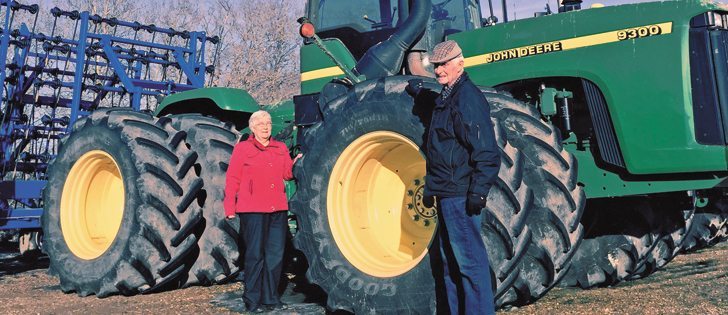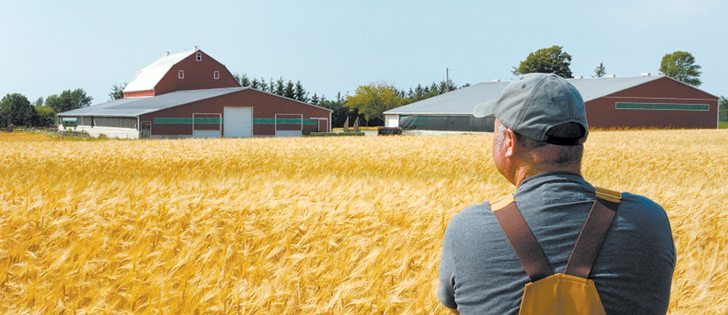About the time farm families think of farm succession, they’re probably also thinking of life after high school for their children.
Whether the kids are going or staying, post-secondary education is a factor to consider.
Because of the whopping cost of tuition and student loans, ideally they will have been thinking about it for a while.
A 2013 report from BMO found that a four-year university degree can cost more than $60,000. By the time a child born in 2013 would be ready for college, the report said, that number could be higher than $140,000.
Read Also

Joint tenancy differs from tenancy in common in Sask.
While joint tenancy and tenancy in common both allow co-ownership of a single parcel of land, the impact of each optiondiffers drastically when it comes to estate planning.
And that’s not including room and board. Few rural students will be attending schools that are an easy commute from the farm.
Other stories in this series:
- Finding satisfaction after retirement
- What happens once you’re there (and it’s no fun)
- Retired and bored? Give the yard a facelift
- The pros and cons of buying a condo in the city
Registered Education Savings Plans are the most popular and possibly the most gainful way to save for education. Money assigned to an RESP can grow tax-free.
As well, the Canada Education Savings Grant, which is available through the federal government, adds an additional 20 percent to RESP contributions of up to $2,500 per year, while the Saskatchewan government kicks in another 10 percent.
The Saskatchewan Advantage Grant for Education Savings gives families up to $250 per child per year. Similar programs are in place in British Columbia and Quebec.
Dewayne Prochinsky, branch manager of the Canadian Scholarship Trust Plan (CST) in Regina, says the maximum amount that could be accrued with an RESP depends on the interest rate that the plan is able to obtain over the life of the program.
“On average, the CST has been earning around four to five percent,” he says.
“Using those numbers, if a parent elected to contribute the maximum amount of $2,500 per year per child, they would receive $500 per child per year from the federal government and an additional 10 percent or $250 from the Saskatchewan government. At the maturation of the plan, around $80,000 would be available for the beneficiary’s post-secondary education.
Prochinsky said contributions to an RESP are taxed once a student withdraws them, but students generally have little or no other income, so it likely would not be a tax burden for them.
The master list of designated educational institutions is updated regularly and contains all the educational institutions where students are eligible to receive Canada Student Loans. It can be found at www.esdc.gc.ca/en/post_secondary/designated_schools.page,
If the child decides not to continue their education at a designated educational institution, then the government grants will be returned to the government and personal savings will be returned to the person who opened the plan.
Earned interest on all funds can be applied to other siblings for their education. If that’s not an option, the interest earned will be called an accumulated income payment and will be taxed at your regular income tax rate plus 20 percent. It can also be transferred into the Registered Retirement Savings Plan of either parent.
Even parents who contribute the maximum amount to an RESP for the maximum time of 17 years may still be short on funds. Farm kids could consider creating an income stream on the farm, such as investing in feeder calves or maybe a flock of chickens.
Other off-farm options recommended in the BMO report include:
- Open a non-registered account: A savings account designated for a college fund offers flexibility, is easy to set up and simple to understand. You can withdraw the funds for whatever reason at any time and retain control of them after your child reaches the age of majority. However, parents will be taxed on the income from the account and any capital gains. Moreover, it can be tempting to dip into those funds for other purposes.
- Use a Tax-Free Savings Account: A TFSA will grow tax-free, and the money can be easily withdrawn in the future to help finance a child’s education, without having to pay taxes.
- Pay out corporate dividends: Producers who have incorporated the farm could build up savings in the corporate account and pay them out in the form of a corporate dividend at a later date to pay for their child’s education, the BMO report says. Your child would need to own shares of the company. This is beneficial because the dividends will be taxed in the hands of your child, who will presumably have a low income.
- Set up a trust: A trust, which is a legal agreement where money is transferred from one person to another according to specific terms, is a good way to “manage, control and protect funds” because it gives a parent or grandparent the peace of mind of knowing that the money will be used for its intended purpose, the BMO report says. It is important to set up the trust properly with a written agreement that outlines terms and conditions, noting that there are also tax consequences to consider, depending on how the trust is funded.
- Life insurance: To use life insurance to help fund a child’s post-secondary education, you would name yourself as the owner and your child as the life insured on the policy. The beneficiary, who would receive the death benefit, can be the owner or someone else of legal age.
Always check with a financial adviser before using this or any savings method to find the best plan for you and your needs.














